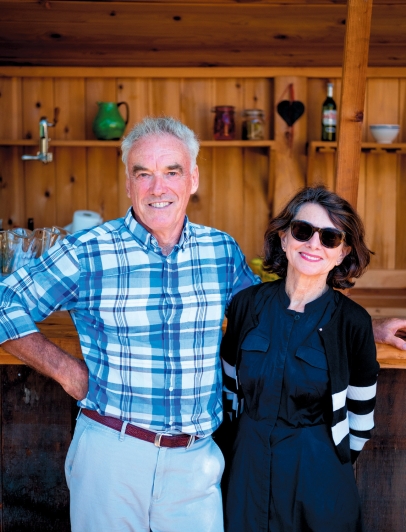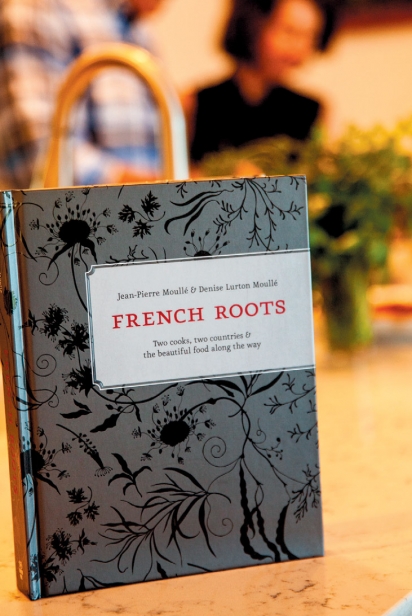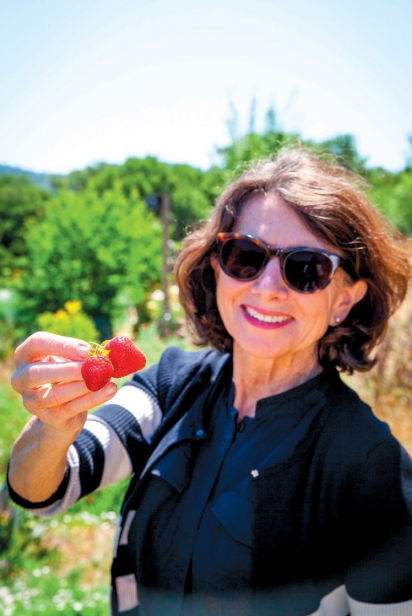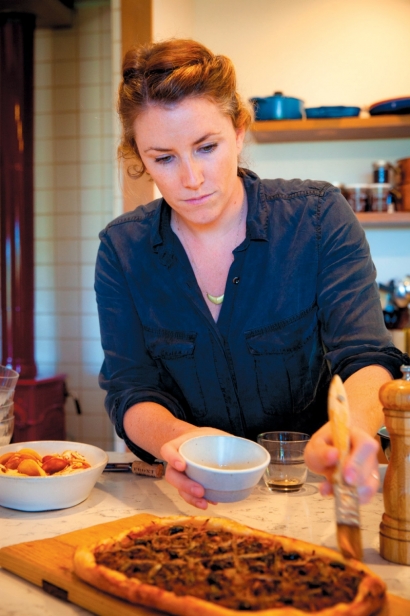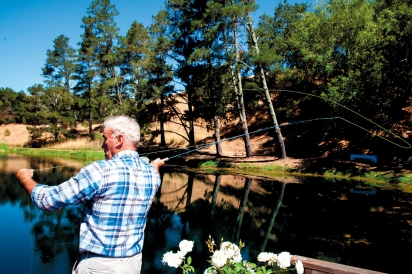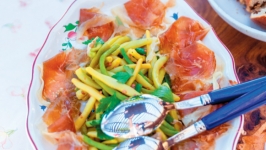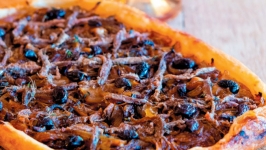Two Bordelais in Healdsburg
Jean-Pierre Moullé is one of the great chefs of his generation. Classically trained in the French tradition, Jean-Pierre was the chef at Chez Panisse for more than 30 years, where he helped shape what would become one of the most iconic and influential restaurants in the world. The Berkeley landmark is famous for being an early proponent of fresh, in-season and locally sourced ingredients. For the country-raised Jean-Pierre, nothing could have been more familiar.
Once, when the chef and I were talking about vegetable gardens, he told me, “The idea of farm-to-table is not new for me—that’s how I grew up. Like almost everyone else I know who was raised in the French countryside, what we ate at the table every day came from our garden and our fruit trees, or the barnyard. We foraged and hunted and, if we needed, we bought from our neighbors—it was normal.”
If “normal” for Jean-Pierre sounds like a little bit of paradise to the rest of us, that is exactly what he and his wife, Denise Lurton Moullé, have created at their ranch near Healdsburg. And last year they began opening up their bit of paradise to others, offering small, hands-on cooking classes at the ranch.
I visited the ranch late last summer, to see for myself what Jean- Pierre, Denise and the couple’s daughter, Elsa de Brosses, who will be co-leading the cooking classes, have in store for their lucky guests. The ranch house itself, with a newly remodeled, expansive teaching kitchen, is nestled into a hillside, surrounded by extensive herb and flower gardens overlooking the small valley and lake below. Beyond the valley rises a forest of oak and pine, where wild boar and turkeys roam. From the pier on the lake, Jean-Pierre fishes for the big-mouth bass that inhabit the waters. Stretched along the lakeside, a long table with benches and a wooden building with a bar reminds me of the simple stands you find at many French beaches, offering drinks and sandwiches. It’s here that the Moullés offer cooking class participants their first taste of French-style apéritif hospitality.
A path leading away from the house, skirting the hillside, ushers guests to what I think is the heart of the Moullé ranch and home: a vast, terraced, year-round vegetable garden, bordered by fruit trees and interspersed with flowers. Like Jean-Pierre, I love my vegetable garden, and I recognized the French touches in his, reminiscent of those of my neighbors in France. He showed me a large patch of ground scattered with a mix of all different kinds of young lettuces, with some basil and arugula mixed in.
“After planting, I just toss any leftover seeds here. I picked the lettuces for our salad here this morning,” he explained.
Near the lettuce patch was another space, this one filled with hundreds of tiny leeks grown from seeds Jean-Pierre had saved from a previous year’s crop. Leeks are an important part of French cooking, and in Denise and Jean-Pierre’s cookbook, French Roots: Two Cooks, Two Countries & the Beautiful Food Along the Way (Ten Speed Press, 2014), you’ll find more than a few recipes that feature leeks, including one for Warm Oysters in Their Shells with Leeks and Champagne Butter—a personal favorite.
As we walked, the gracious couple invited me to sample a few strawberries, perfectly ripe and warm from the sun. The rest of the garden was filled to the brim with high-summer crops—tomatoes, zucchini, eggplants, green and yellow beans, cucumbers and melons. In a few weeks, they would be planting those leek seedlings, along with broccoli, cauliflower and frisée, to harvest in fall and winter.
After a visit to the outdoor wood-burning oven and surrounding seating area that Jean-Pierre built himself, we returned to the house where I followed the Moullés to a deck off the living room which had been set for lunch with vintage French linens and tableware, chilled rosé wine and a brilliant bouquet of flowers from the garden. Elsa joined us, bringing with her the Onion Tart with Anchovies, Olives and Thyme that she and her father had made earlier that morning, along with the promised garden salad, lightly dressed with the Moullés’ own olive oil and vinegar. These were followed by a zucchini frittata and a platter of Green Bean Salad surrounded by thin slices of prosciutto.
Dessert was a bowl of freshly picked strawberries and blackberries, accompanied by a crisp cookie. The simple but exquisite meal expressed the essence of the Moullés’ lifestyle—perfectly in tune with the rhythm of the seasons.
The afternoon concluded with a visit to one of the ranch’s barns, which has been outfitted with a gorgeous kitchen where Jean-Pierre makes preserved fruits, jams, infused wines and pickles, all sourced from the property’s fruit trees and gardens. In another section of the barn he is making balsamic vinegar.
During my visit, it became clear to me that what the Moullés are offering their student guests is far more than a cooking class. It is an opportunity to work side by side with one of America’s best chefs and his family, immersed in the Bordelais-inspired but distinctly California Wine Country world that they have created with immense love.
It’s catching.


